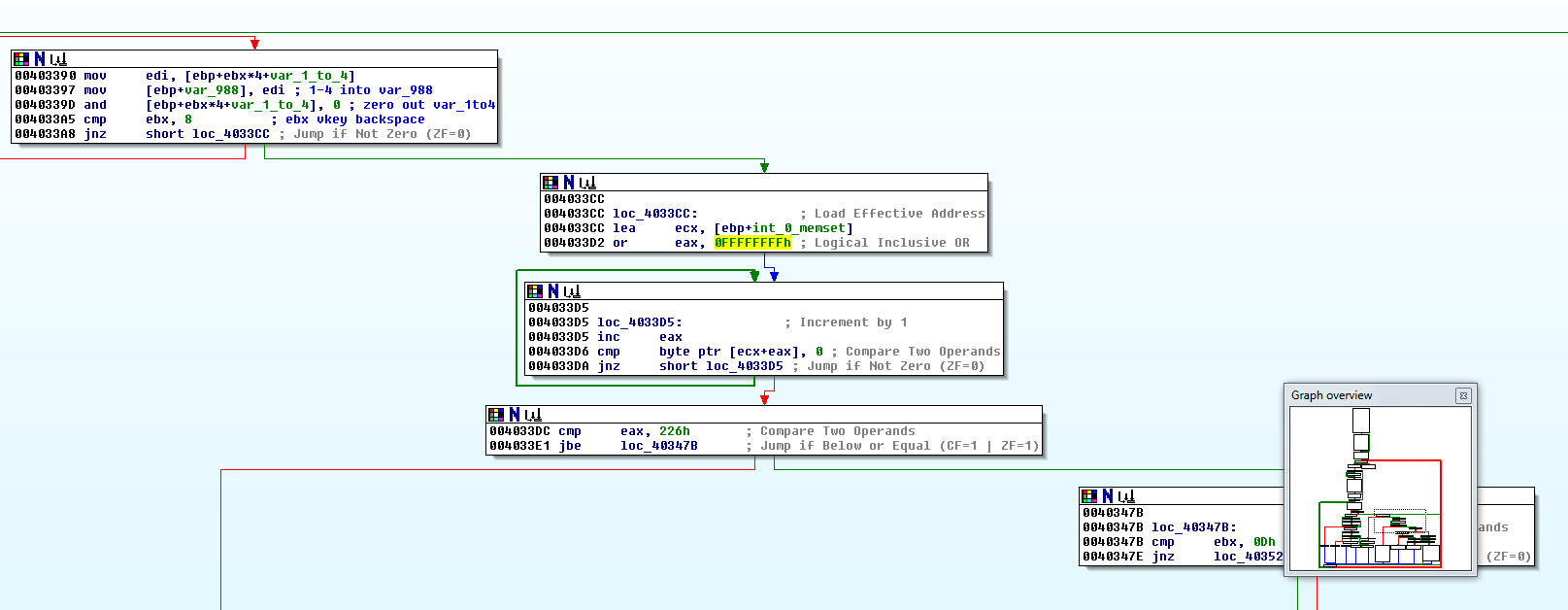I am looking at some assembly code and can't get my head around it. The code below is shown in IDA. My question revolves on what happens in the loop.
Let me explain what I exactly don't understand in the loop: Above the little loop eax is set to be FFFFFFFFh, which is basically "1" in all the 32 bits in eax(?). In the little loop eax is incremented. But eax is at max value? What happens when I increment eax? Will it go back to 0?

